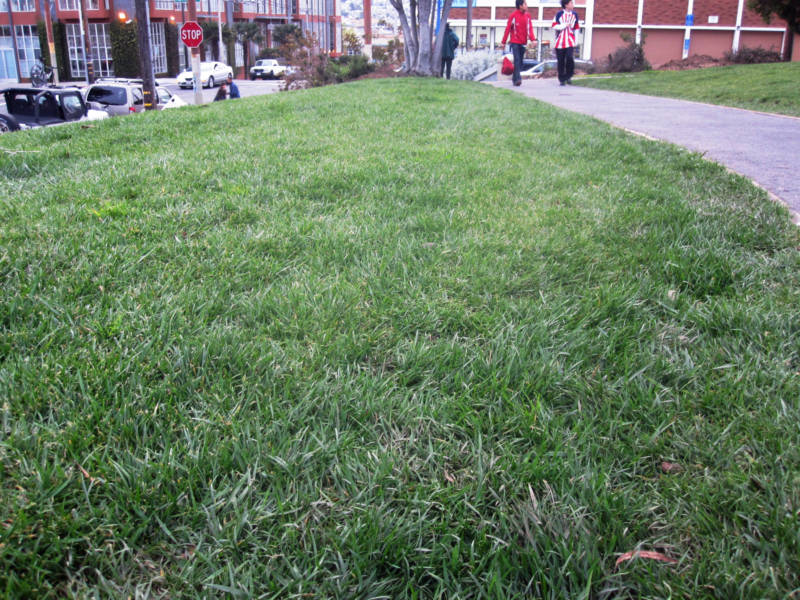
One of my favorite things about living in San Francisco is that springtime starts in February. A month, which, when I was growing up in New England, was the grayest, worst month of all.
But here, walking down the street outside KQED last week, I could smell the blossoms on the budding trees. Sometimes you can even hear the birds chirping over the sounds of buses pulling in and out of the MUNI yard across the street.
One block away from the station, there’s a public park. The turf grass there has been pretty green all year (something that was certainly not true of the parks from my childhood.) Walking by the park and its lush green lawn the other day, I was reminded of an argument I’ve been having with my mother for about 20 years: Just because its green, and it’s grass, that doesn’t mean it’s good, Mom. Okay, maybe it’s visually good, if you go for a certain aesthetic, but a perfectly manicured lawn, green as it may be, isn’t necessarily good for the planet. And I’m not just talking about the visits that ChemLawn paid to my childhood home every summer.
Yes, there’s the water issue. In California, we could still be staring into our fourth year of drought (mostly from cumulative effects of the past three years), and there’s been a lot of talk about how much water traditional lawns eat up. There are advocates for growing native plants in front of your house instead of turf grass for that very reason.
But a recent report takes the lawn debate beyond water. In the study, researchers from UC Irvine found that ornamental turf grass actually produces more greenhouse gases than it absorbs, once you factor in emissions from irrigation, fertilization, and mowing. Plants naturally remove CO2 from the air as part of photosynthesis, and so lawns and parks have often been thought of as carbon “sinks,” that is having a net negative effect on atmospheric CO2 levels. But that may be because most studies haven’t factored “lawn care” into the equation.
Read more about the study in the LA Times.
